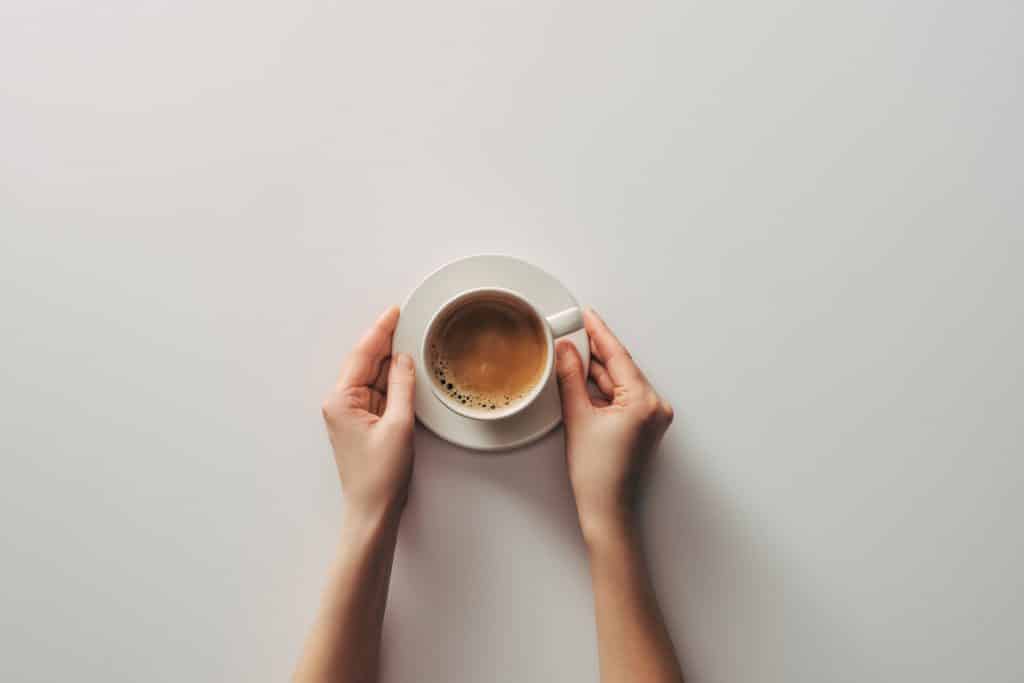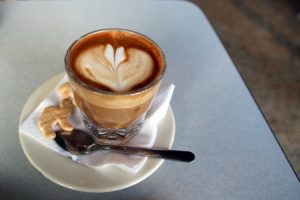
How to fix weak coffee
Nothing is worse than sitting down with your much-anticipated cup of morning (or afternoon or evening) coffee and taking that first sip, only to discover
A smooth cup of coffee is the thing we’re all looking to brew, right?
But what makes coffee taste smooth? A smooth cup of coffee devoid of bitter and acidic flavors is made by using the right kind of coffee (no dark roast), ground to the proper grind size. The temperature of the brewing water needs to be on point, and you should avoid over-extraction. A trick to make your coffee smoother is to add salt to the ground coffee.

A smooth cup of coffee is one in which the inherent sweetness of the coffee comes out on top. You can taste all the specific flavor compounds that are influenced (among other things) by where the coffee was grown. And, most importantly, it is a cup of coffee without overpowering bitterness or acidity.
In essence, it is the perfect cup of coffee. Ask any barista what he or she aims for in every cup of coffee, and the answer will probably be: to bring out the sweetness. Sweet flavors are easily overpowered by bitter or acidic flavors, so these you need to avoid.
A lot of coffee aficionados grind coffee beans themselves right before they brew a cup (or a pot) of coffee. And while this is an excellent enhancer for the coffee you make, it is not for everyone. But that doesn’t mean you can make excellent smooth and flavorful coffee with pre-ground store-bought coffee.
If you make coffee with a drip coffee maker or any other coffee machine, the best thing you can do is to bloom the coffee. Blooming is saturating the ground before the real extraction begins.
So, the first step in making smooth coffee with pre-ground coffee is to bloom it. This is how you do it:
If you have a machine that allows you to stop the water from running through (like the drip-stop on some Technivorm coffee maker models), you can use this to prevent the water from running through during the bloom.
Most coffee makers have a mechanism that prevents the water from running through when the carafe is not placed in the coffee maker. If your machine has this, you can keep the carafe aside during the bloom phase. When you switch the machine back on, remember to place the carafe back into the machine. Otherwise, things might get messy 😊
The absolute best tip I can give you when you use pre-ground coffee is to add salt to the ground coffee. Skip to the end of this article for more on this weird but fantastic coffee hack. It works!
In my opinion there are 5 things you need to take care of to be able to brew a perfectly smooth cup of coffee.
The right kind of coffee refers to the roast. Many people make the mistake of always choosing a dark roast coffee, believing it will result in a more flavorful coffee. That’s wrong. A good rule of thumb is: the darker the roast, the more pronounced the bitterness. Of course, bitter flavors are also drawn out of the ground coffee by using water that is too hot, or by steeping too long. But more on that later.
For now, remember that you should probably avoid a really dark roast if you are trying to limit the bitter flavors in your coffee.
Medium roasts usually my go-to for pour-over coffee and French Press coffee. They are roasted enough to get the benefits of the Maillard reaction but limit the pronounced bitterness in the roasted beans.
Light roasts are for when you feel adventurous. A light roast brings out the citrus flavor and floral notes in the coffee bean. While delicious, I have found them to be too much for many people. Also, a lighter roast tends to result in a more acidic coffee. Which is another thing we want to avoid in search of the perfect smooth cup of coffee.
The grind size is also a crucial factor in our quest for the smoothest cup of coffee. The grind size is how fine you grind the coffee beans before you start to brew. This should match your brew method. Each brew method has its ideal grind size. This has to do with the time the water is in contact with the beans. The longer the water is in contact with the ground coffee, the more time it has to extract unwanted flavor compounds. When brewing with a French Press, you steep the coffee for a couple of minutes, so the grounds are in contact with water for a pretty long time. When you make an espresso, the machine forces the water through the coffee bed rather quickly. So less time in contact with water.
This means that for a French Press, you would usually grind a lot coarser than for espresso.
My advice is to tune your grind to the brew method. The grind sizes below are an excellent place to start. Find your preferred brew method in the table and check the image relating to to grind size description you need.
| Brew Method | Grind size description |
|---|---|
| Aeropress | Medium-Fine |
| Chemex | Medium-Coarse |
| Clever Dripper | Medium-Coarse |
| Cold Brew | Extra Coarse |
| Drip coffee maker | Medium |
| Espresso | Fine |
| French Press | Coarse |
| Hario V60 | Medium-Fine |
| Kalita Wave | Medium-Fine |
| Moka Pot | Fine |
| Siphon | Medium |
| Turkish coffee | Extra Fine |
if you happen to own one of the more popular electric burr grinders, the table below shows you the right settings for every brew method.
| Brew Method | General grind size description | Baratza Encore Settings | Baratza Virtuoso Settings | Capresso Infinity Settings | Cuisinart Supreme Settings | Bodum Bistro Settings |
|---|---|---|---|---|---|---|
| Aeropress | Medium-Fine | #5 – 20 | #5 – 20 | Fine #1 – Medium #4 | #3 – 15 | Anywhere from espresso to drip |
| Chemex | Medium-Coarse | #21 | #20 | Medium #2- Coarse #1 | #8 – 10 | Chemex icon + 1 |
| Clever Dripper | Medium-Coarse | #14 | #14 | Fine #4 – Medium #1 | #4 – 6 | Drip icon – 2.5 |
| Cold Brew | Extra Coarse | #22 – 40 | #22 – 40 | Coarse #1 – #4 | #18 | Not ideal for cold brew |
| Drip coffee maker | Medium | #15 | #15 – 30 | Medium #1 – Coarse #1 | #10 – 15 | Chemex icon + 1 |
| Espresso | Fine | #5 | #5 | #5 – 7 | #1 | Espresso Icon (far left) |
| French Press | Coarse | #30 | #30 | Coarse #1 | #16 | French press icon (far right) |
| Hario V60 | Medium-Fine | #14 | #13 | Fine #4 – Medium #1 | #4 – 6 | Drip icon – 2.5 |
| Kalita Wave | Medium-Fine | #14 | #13 | Fine #4 – Medium #1 | #4 – 6 | Drip icon – 2.5 |
| Moka Pot | Fine | #12 | #12 | Fine #2 – Medium #1 | #2 – 5 | Espresso icon + 1 |
| Siphon | Medium | #13 | #13 | Fine #3 – Medium #1 | #4 – 10 | Drip icon – 2 |
| Turkish coffee | Extra Fine | #1 | #1 | Extra Fine #1 | Not ideal for Turkish coffee | Not ideal for Turkish coffee |
While it might seem evident from the tables above how fine to grind your coffee, you shouldn’t see them as hard rules. I urge you to experiment. Making coffee is mostly a matter of taste.
Every kind of coffee bean has its own subtleties and can require an adjustment to the grind size to match your taste. If you use the same brand or variety of coffee, you can dial it in gradually. Tweak your grind settings until you have the perfect coffee for your taste.
All right, we have covered the grind settings. Lets move on to the next critical factor for smooth coffee.
How hot is the water you brew with? Do you brew when it comes right of the boil? That might be part of the problem. See, you can burn ground coffee with boiling water!
To minimize the bitterness that comes from brewing with water that is too hot, let the water cool a bit when it comes off the boil. Ideally, the water you brew coffee with should be between 200 and 205 degrees Fahrenheit or 93 and 96 degrees Celsius.
You could use a thermometer for this, but when making coffee in the morning with a sleepy head or in a rush to get to work, you might not want the hassle. A good rule of thumb is to boil water in your (electric) kettle and when it is boiling, open, or take off the lid and let it sit for 1 to 2 minutes. I should be at the ideal brewing temperature at that point.
The bloom is where you wet the ground coffee before the extraction begins. For instance, when you make pour-over coffee, you add just enough water to wet all the grounds. This helps the even extraction of rich and smooth coffee flavors.
You can bloom in any coffee maker (except in an espresso machine). Yes, even in your trusty drip coffee maker. To do this: switch on your coffee maker for long enough to wet all ground (for one minute on most coffee machines), and switch it off. Wait for 10-20 seconds and switch the machine back on.
Over-extraction is the enemy of a smooth cup of coffee. If you use a manual brew method where you need to track your brew time (e.g., French Press, pour-over coffee, etc.), stick to it!
Take a look at the table below for an overview of brew times for a few of the most popular coffee-making methods. If you use a machine, you can skip this. Your machine dictates the brew time.
| Brew Method | Approximate brew time |
|---|---|
| Aeropress | 1 to 2 minutes |
| Chemex | 3.5 to 4.5 minutes |
| Clever Dripper | 3 to 4.5 minutes |
| Cold Brew | overnight |
| Drip coffee maker | automatically |
| Espresso | 20 to 30 seconds |
| French Press | 4 minutes |
| Hario V60 | 3 to 4 minutes |
| Kalita Wave | 3 to 4 minutes |
| Moka Pot | 4 to 5 minutes |
| Siphon Coffee Maker | 2 to 2.5 minutes |
| Turkish coffee | 4 to 5 minutes |
Next, we have something really awesome.
This is a trick I learned from cookbook writer and tv-personality Alton Brown. When he said to add a quarter tablespoon of kosher salt to every six tablespoons of coffee, it blew my mind. I couldn’t believe that this was for real until I tried it. So I did. And I have been doing it ever since, especially when I make coffee in a regular drip coffee maker with pre-ground coffee.
When you add salt to the ground coffee right before you brew, you might think it changes something in the water that makes it less bitter. But it is even weirder than that!
The amount of salt you add is too little to make your coffee taste salty. What it does is it inhibits the taste receptors on your tongue from tasting bitterness. More specifically, your taste buds react to the saltiness instead of the bitterness. And while your taste buds respond to the saltiness, the amount of salt you add is too little to make it taste salty. In other words, salt in coffee neutralizes the bitterness.
As said, I learned it from Alton Brown, but he didn’t invent it. Adding salt to coffee is part of the traditional coffee-making practices of many countries, including Turkey, Hungary, several Scandinavian countries, the region of Siberia in Russia.
And there is even academic literature on the subject!
So now you know what makes coffee taste smooth AND you know how to make that perfectly smooth cup of coffee. You can do this! Go and make awesome coffee! You deserve it!
If you would like to learn more about making great coffee. Please consider reading some of our best articles on brewing better coffee.
MonsieurCoffee.com is a participant in the Amazon Services LLC Associates Program, an affiliate advertising program designed to provide a means for sites to earn advertising fees by advertising and linking to Amazon.com. We earn small commissions on purchase made through links on this site, at no extra costs to you.

Nothing is worse than sitting down with your much-anticipated cup of morning (or afternoon or evening) coffee and taking that first sip, only to discover

Stop using the terms cortado vs latte incorrectly. These two espresso drinks are similar but read here to see why they are different and why it matters.

To be honest, it doesn’t keep me up at night. But the question of whether coffee is man-made has fuelled quite a few late-night (and

What are the best goosneck kettles for making coffee? A good gooseneck kettle can make the life of a home barista a whole lot easier.